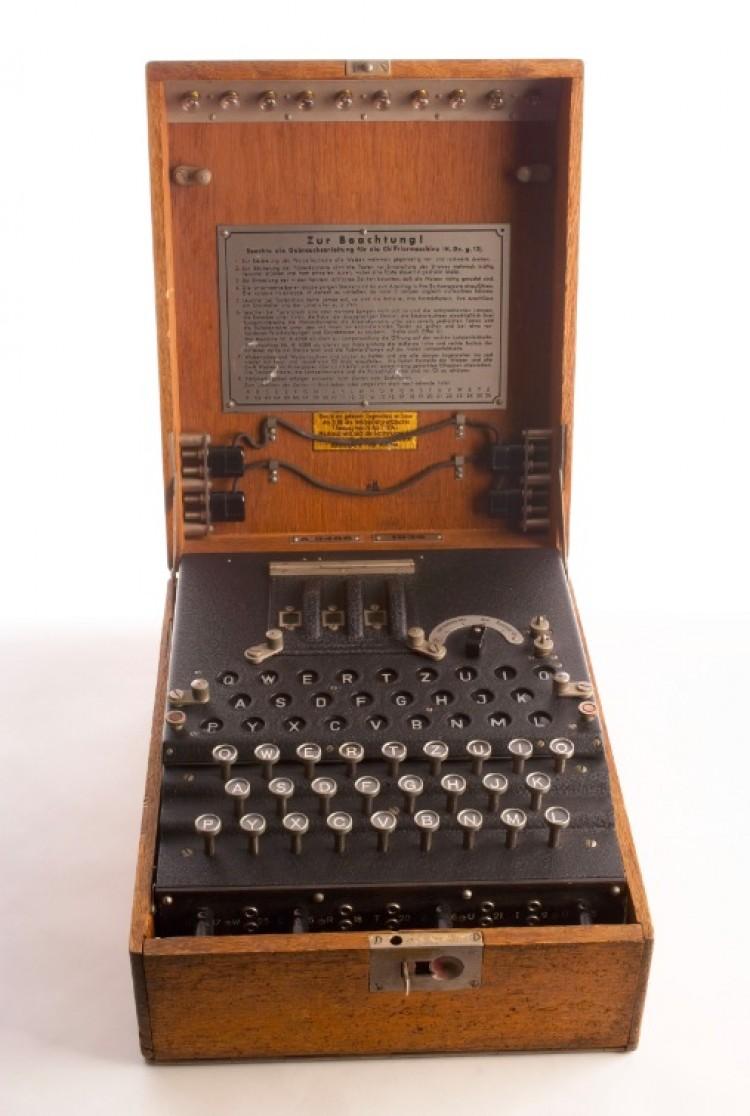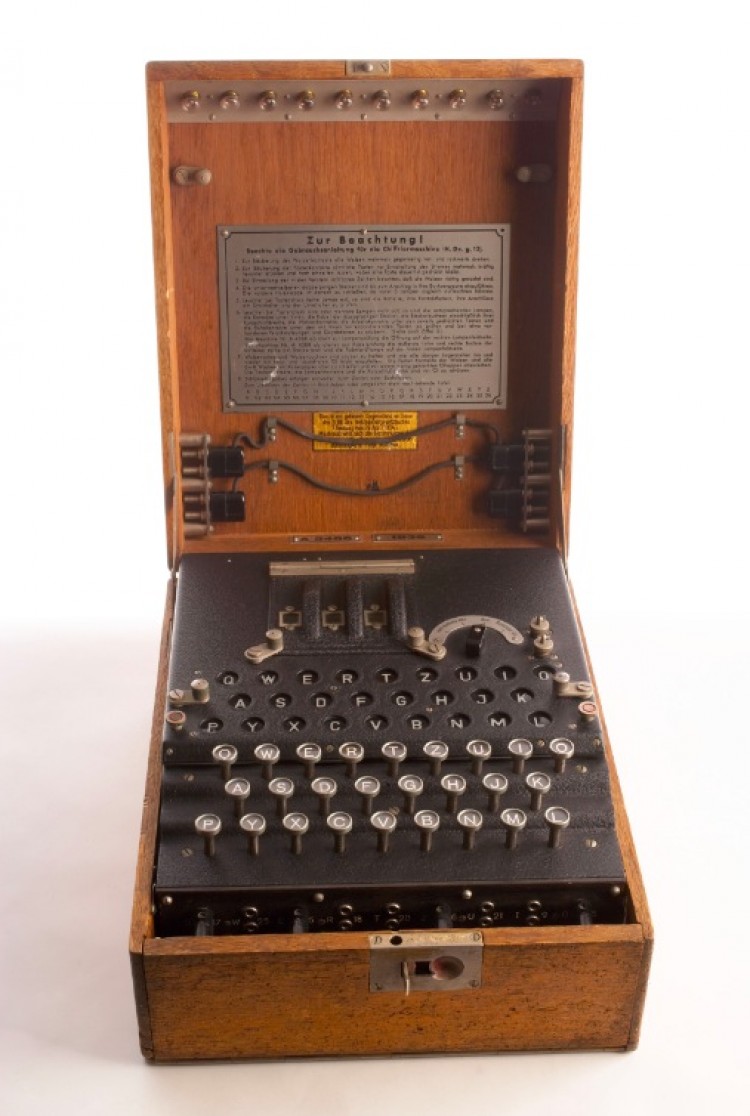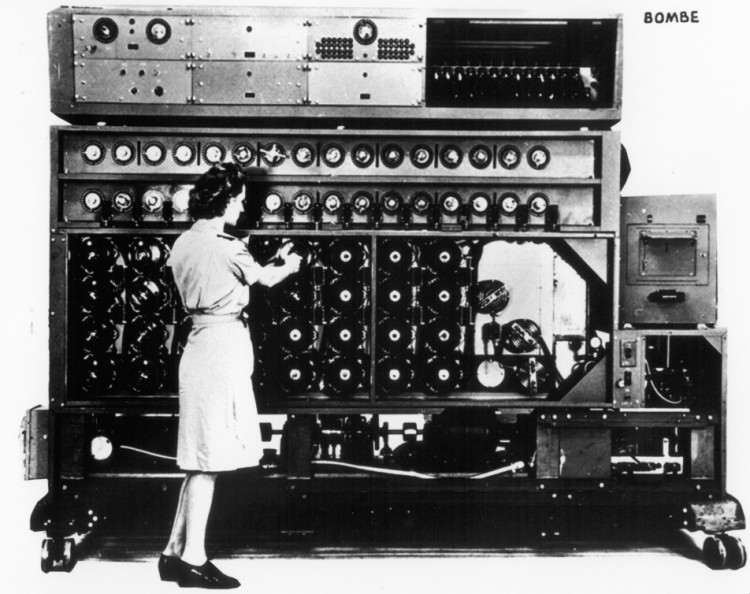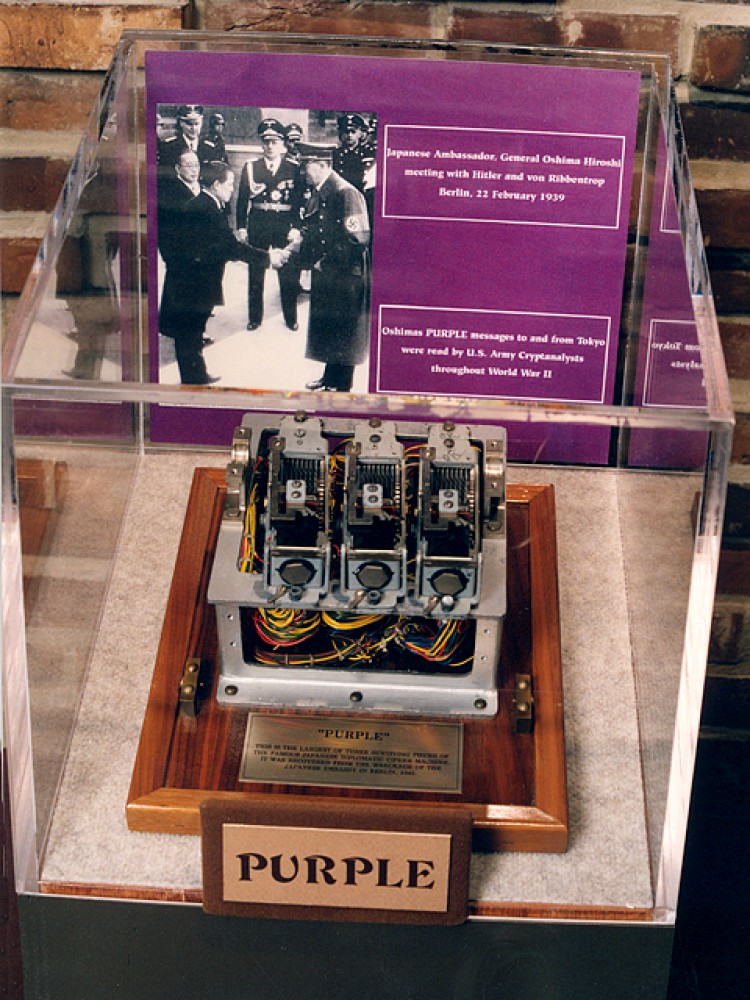After several months of research, they found a solution in December 1932. By observing the wiring, stepping motion, and set up of the device, they were also able to devise a machine of their own to decode it. They created a hulking, electromechanical machine known as the “bombe.”
The bombe represented an initial step in decoding the Enigma, but before the researchers could perfect it, the Germans invaded Poland in 1939. The researchers hurriedly passed their knowledge to the British and French who carried it further, according to a National Security Agency (NSA) report.
Continued on Next Page: Machines to crack the Enigma codes
Rise of the Colossus
Work on the bombe was handed to Alan Turing, who was developing a concept of a computing device, the Turing Machine, capable of performing rapid calculations. Gordon Welchman, a fellow Cambridge mathematician, according to The National Archives of the U.K, would join the British mathematician in his work.
By 1940, they began decoding Luftwaffe communications, as use of the Enigma spread through the German military. Keeping up with the Nazis was difficult, however, as the Germans “began strengthening their system by changing the cipher every day,” according to The National Archives.
The spoils of spy games and ingenuity led to the creation of a yet more powerful code-breaking machine, the Colossus, set to crack teleprinter messages encrypted by Germany’s Lorenz cipher. The Colossus, a massive wall of buttons and wires assembled from telephone exchange parts, was capable of decoding 5,000 letters per second.
The Colossus was the first programmable electronic computer. It used vacuum tubes to run calculations of encrypted messages passed through it on a spool of paper tape. When it found a likely solution to a coded message, it would send it to an electric typewriter.
Among the notable achievements of the Colossus machines was their decoding information from German High Command before D-Day that “provided critical information on troop positions in Normandy before the Allied invasion began on 6 June 1944,” according to The National Library.
Spy Games
Gathered intelligence from the Colossus machines was deemed so valuable that it won the code name “ULTRA” by the Allies.
A key goal of espionage, as any expert will say, is learning how an enemy operates. Like a master card player predicting the moves of an opponent in a poker match, if a nation can learn how another nation thinks, they will have a clear understanding of what lies behind their every action and what their next card will be.
Maintaining a shroud over how a military operates, likewise, is among the most guarded secret of every nation. Leading up to modern times, for example, the exposure of how the U.S. operates by military documents released by data-leaking organization WikiLeaks was among the main calls of concern among U.S. military officials for this same reason.
Cryptology is split into two parts. Signals Intelligence (SIGINT) is the art of exploiting encrypted communications of an enemy nation, while Information Systems Security refers to guarding communications from prying eyes.
Breaking the Enigma code is believed to have saved countless lives by giving “continuous insight into what the enemy was saying to itself,” according to a report by David A. Hatch, director of the Center for Cryptologic History, National Security Agency.
Since the Allies had cracked both the German and Japanese cipher machines, the Allies were able to listen in on communications between the two countries, and the data proved invaluable.
“With their fate linked inextricably to Germany’s, Japanese leaders demanded accurate and detailed data about all aspects of the war in Europe,” and data from Japanese communications “provided detailed insight into the thinking and activities of Nazi leaders, Mussolini, and the leaders of Vichy France, among others,” stated Hatch.
“This unprecedented—and sustained—insight into the activities, thinking, and interactions of our enemies worldwide and at the highest levels gave the Allies an incalculable advantage,” stated Hatch.












